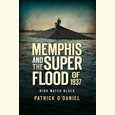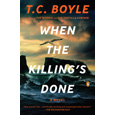Wonder Boy of the South
Author William Walker waves the final flag on the death of Indy racing legend Pete Kreis
The passage of time and distance from a tragic event can often enable a better understanding of why it occurred. Such is the case with the death of Peter Kreis, a long-forgotten racing legend whose life came to an end far too soon.
 Knoxville native William Walker’s The Last Lap: The Mysterious Demise of Pete Kreis at the Indianapolis 500 is a fascinating account of Kreis’ life and the seemingly random, inexplicable accident that killed him just prior to the 1934 running of the storied race.
Knoxville native William Walker’s The Last Lap: The Mysterious Demise of Pete Kreis at the Indianapolis 500 is a fascinating account of Kreis’ life and the seemingly random, inexplicable accident that killed him just prior to the 1934 running of the storied race.
Accidents and deaths were common at the burgeoning Indianapolis Motor Speedway during the 1920s and ‘30s, as the need for speed propelled drivers and manufacturers to take increasingly dangerous risks, but no one could adequately explain the how and why of this particular tragedy. Kreis’ death was shrouded “by decades of speculation, misleading theories, tall tales and lies,” Walker writes.
Walker’s lifelong obsession with the incident and the driver, who also happens to be his cousin, began with his own curiosity surrounding Kreis’ tombstone: an elaborate carved monument of the famed racetrack, complete with a miniature replica of his race car riding the Turn One wall and the haunting inscription, “The Last Lap.”
“I’ve pondered countless memories, narratives, newspaper articles, fictions and fables,” Walker continues. “In my head, the stories wind around the memorial like ivy embraces a dead tree, concealing a sad truth that best be forgotten.”
Walker draws from key interviews, facts, and narratives garnered over the course of three-quarters of a century to piece together the story of a shy Knoxville youth with a penchant for speed. “It was clear that driving — more accurately fast driving — had become Pete’s distinctive obsession,” Walker writes. It was, in fact, the single element distinguishing him from his two older brothers, Harmon and John, who otherwise overshadowed him in every way.
 The 1920s saw Kreis emerge from the obscurity of East Tennessee’s local tracks to become a sensation in international motorsports. While his father worked to expand the family railroad-building business, his wealth allowed Kreis to catch the eye of famed manufacturing teams the Duesenbergs and Millers, gaining him seats in both Formula One and Indy race cars alongside some of the biggest drivers of the day.
The 1920s saw Kreis emerge from the obscurity of East Tennessee’s local tracks to become a sensation in international motorsports. While his father worked to expand the family railroad-building business, his wealth allowed Kreis to catch the eye of famed manufacturing teams the Duesenbergs and Millers, gaining him seats in both Formula One and Indy race cars alongside some of the biggest drivers of the day.
But while he thrilled at the opportunity to drive fast, the death toll on fellow drivers, mechanics, and even fans in spectacular crashes had a lingering effect on Kreis, Walker notes. An off-course wreck in 1924 in which his neighbor Carroll McCall was killed with Kreis at the wheel “left a huge scar on the young man’s psyche, one that was to haunt him for years.”
Pushing his “survivor’s guilt” and his own fears of tragedy on the track aside, Kreis continued to tackle racing with fervor and before long he became the new phenom on the Indy circuit. After a fifth-place finish at Culver City, California, in 1925, he was quickly dubbed the “Wonder Boy of the South.” He followed that up with an eighth place finish at his first Indy 500.
“For the first time in his life, Pete stood at the front and center of his family, acclaimed not only by his father but also by his older brothers Harmon and John,” Walker writes, noting that his finish even garnered him a parade upon his homecoming.
“Instant celebrity embarrassed Pete, and he reacted in a variety of ways: avoidance, silence, but, most often, with modest good humor,” Walker continues. “Kreis clearly insisted on being in control of his destiny and felt safe only when he was at the wheel.”
Even so, Kreis worried about his confidence and stated, “If I ever lose my nerve I’ll quit. It would be suicide to go out there … and have your nerves go to pieces.”
Nerves aside, an ill-timed bout with the flu ultimately sidelined Kreis before the start of the 1926 running of the 500. His replacement, Frank Lockhart, went on to win the race, to Kreis’ dismay. Walker writes. “Lockhart had lived Pete Kreis’s dream — the one he had envisioned, the one he had sought, the one he had planned.”
After the death of another driver friend, Harry Hartz, Kreis curtailed racing at his mother’s behest, though he vowed to keep his Indy dream alive. The Great Depression, pressure to help with the family business, and the alcoholism of his older brothers also begin to weigh on his mind.
It was only a few short years later, in 1934, when tragedy befell Kreis himself on Turn One. During a practice run, Kreis’ car crashed into the turn, rode along the top of the retaining wall for 75 feet before careening down an embankment and hitting a tree, killing both Kreis and his mechanic.
Walker notes that “an unofficial ‘coroner’s jury’ of Indy drivers and speedway officials” deemed Kreis’ demise “the strangest death in all racing history,” going on to imply that his death may have been a suicide.
Walker offers his own theory about what happened on Turn One that fateful day. While he makes a compelling argument after more than 250 pages of narrative, readers ultimately will be left to draw their own conclusions.
The Last Lap delivers an unforgettable look at Pete Kreis’ life and death on the Indy racing circuit and an engrossing historic look at the birth and rise of the motor speedway and the sport itself. Even without instant replay, the account may leave readers rerunning the last lap over and over in their minds long after closing the book.
*[This review has been updated to correct information about Pete Kreis’ racing career.]

G. Robert Frazier is a former Middle Tennessee newspaper reporter and editor now working as a book reviewer and aspiring screenwriter. He has served as a script reader for screenwriting competitions at both the Austin Film Festival and the Nashville Film Festival. He lives in La Vergne.


